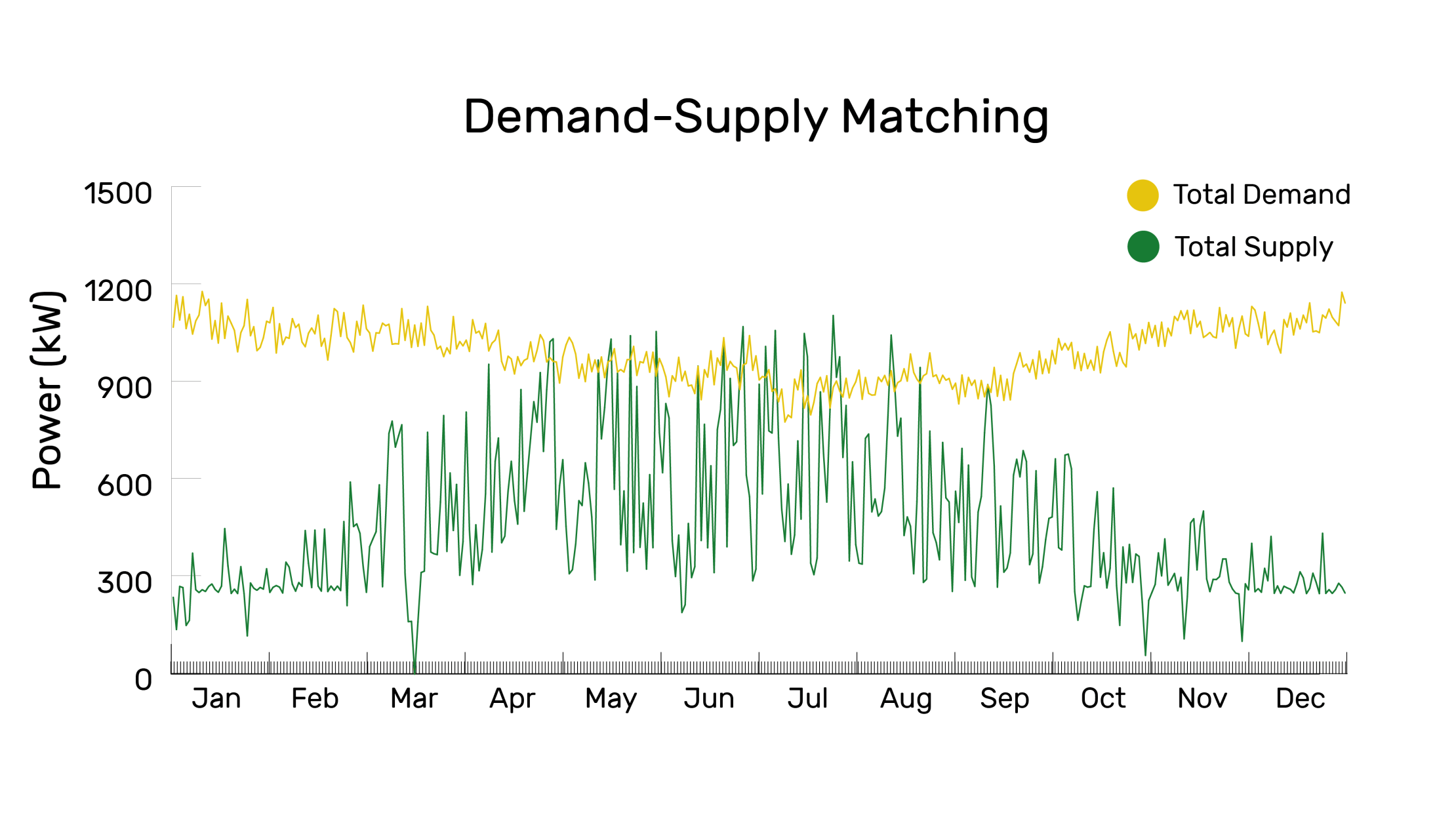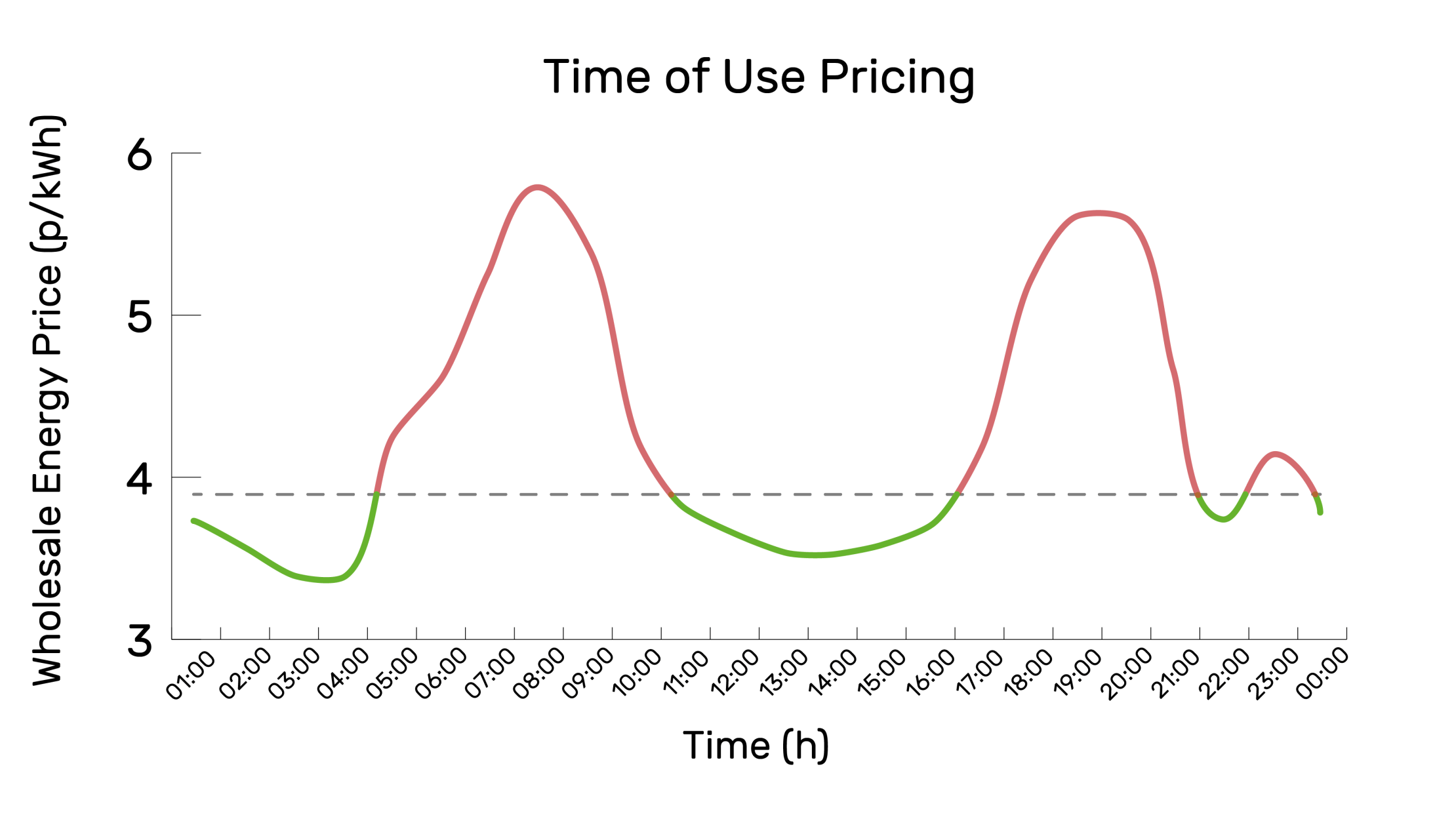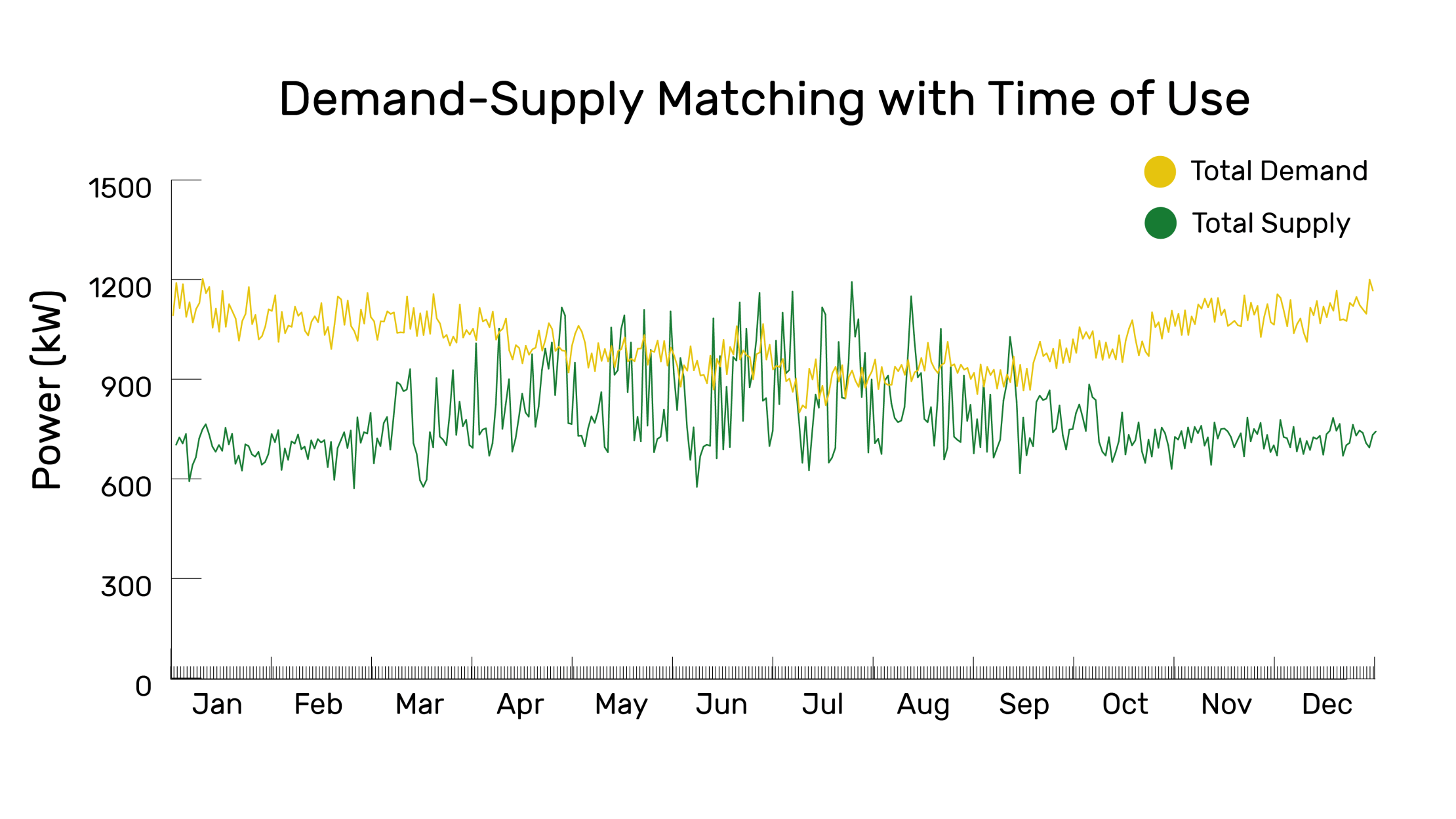
After assessing and modelling a much lower energy demand for the village and eliminating direct use of fossil fuels, and after meeting 40% of this new demand with proposed community owned renewable generation, the remaining 60% could continue to be met through purchase of grid electricity. Grid electricity would continue to be made up from a mix of renewable and non-renewable generation.
The chart above shows the output of the SIMEC hydro plant compared with the total modelled future demand for the village. However, the large hydro scheme is selling its energy to the grid, while the village is purchasing from the grid, but this is a metering exercise and in practical terms some of the electricity generated by the hydro is consumed directly by the village. This questions whether a commercial relationship between the community and the large hydro can lead to cheaper electricity prices for the village.
The map below shows the location of the SIMEC hydro plant in the village.

To investigate how to meet the village’s supply deficit, the first step must be to assess how the power demand and supply match; identifying the timing and magnitude of peaks and troughs of surplus and deficit. Demand profiles generated in the previous sections were amalgamated to create a total demand profile for the village. These, and the supply profiles from the modelled tailrace hydro scheme and PV installations were loaded into Merit to perform demand and supply matching for the community.
The following chart shows the yearly aggregated demand profile overlaid with the combined supply profile of PV and hydro. As expected, demand fluctuates seasonally and daily. The base load from the hydro supply is clearly visible along with the seasonal variation expected from PV supply.

The large hydropower station in Kinlochleven was originally “equipped with 11 Pelton wheel turbines, each powering two 1 MW direct current generators — though only 10 of the turbines were usually operational at the same time. There were also two 2 MW alternating current generators, giving the station a combined total power output of 24 MW” [27]. When the aluminium smelter closed, it was reconfigured with three Francis reaction turbines (10.2 MW, 4.15 m3s-1, 1000 rpm) with flywheels and synchronous generators supplying grid (with power factor correction when required) [19].
Restricted to 19.5 MW in 2002 to be eligible for the Renewables Obligation, an amendment was agreed in 2018 allowing an additional 8MW, but this is not eligible for any support mechanism and will be sold at the market rate [28]. With capacity at 19.5 MW, the operators, SIMEC, enjoy an incredible load factor of around 94%, consistently producing around 160 GWh per year which is all supported by Renewable Obligation Certificates (ROCs)[26].
This project proposes the village and SIMEC agree a mutually beneficial Private Purchase Agreement, where the village buys part of the unsupported 8 MW when the wholesale market price is low, at a price point between what the hydro can sell to the grid and what the village would otherwise pay for energy from the grid. A Private Purchase Agreement such as this was attempted with the Smart Fintry project [29]. Although Smart Fintry struggled to be commercially viable, there appears to be potential for a successful partnership in Kinlochleven.
The electricity wholesale market price is variable. Fluctuations are caused by changes in demand and, increasingly, the saturation of renewables on the grid. For the purpose of this exercise a threshold price below which the village should buy was set at 90% of the average price. The following chart shows the wholesale price on a typical day, with the buy threshold marked at 3.84 p/kWh.[30]

Using the wholesale electricity price, a new supply profile was generated in Excel. This supply profile was designed to meet the excess demand with power from the PPA when the price was below the threshold. The following chart shows demand and supply matching with this new supply profile included.

Although the demand deficit was reduced, energy storage would enable the village to eliminate the community supply exported to the grid and meet the excess demand with cheap energy purchased from the large hydro.
To size the battery, a spreadsheet utilising the generated demand profiles and the supply profiles from the small-scale hydro and the PV installations, was created. Logical statements were then used to determine the times and magnitudes of charging and discharging of the battery to meet the demand shortfall with energy purchased below 90% of the average wholesale price. Different battery capacities were tested to determine sufficient storage. A 10 MWh battery was determined to be a suitable capacity. This would incur losses of 0.35 GWh per year. The spreadsheet can be found on the downloads page.
This project has shown how, with a PPA and electrical storage, the community’s grid can be balanced. There are large areas of brownfield land within Kinlochleven where the storage could be sited. Alternatively, houses could be equipped with individual battery banks as part of the retrofit, and a community wide control system developed to ensure charge and discharge at appropriate times. Thermal storage is generally cheaper than electrical storage and could also be used in the residential houses to store the domestic hot water and space heating. With a suitable control system, the thermal store could also be charged and discharged under the same conditions, thereby reducing the size of electrical storage required for the village.